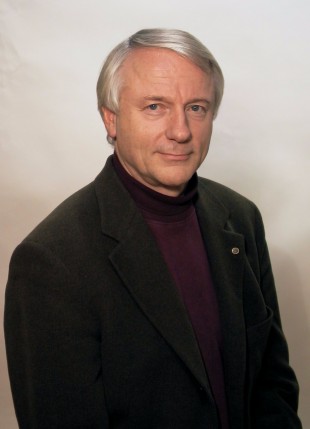
Birkelandforelesningen 2018: Fra Birkelands kanon til kosmiske akseleratorer
Årets Birkeland-foreleser er den svenske professoren Rickard Lundin fra Institutet för rymdfysik (IFR). Han har satt som tittel på sitt foredrag «From Birkeland's Gun to Cosmic Accellerators». Den første Birkelandforelesningen ble holdt i 1987 og siden har det vært et årlig arrangement. Nye elementer er kommet til etter hvert, som Yaras Birkelandpris som ble utdelt første gang i 2009. Siden 2012 har det også vært holdt en introduksjonsforelesning om et tema knyttet til forskning og innovasjon.
Birkelandsforelesningen for 2018 holdes 20. september på Det Norske Videnskaps-Akademi. Den er åpen for alle interesserte. Hele arrangementet går på engelsk.
Innledningsforelesningen holdes av Bjørn Tore Orvik: «Yara Birkeland - Representing the next generation of ships».
Yaras Birkelandpris
Yaras Birkelandpris som alternerer mellom fysikk og kjemi, skal gå til et dr. gradsarbeid som best møter Birkelands forskerånd. Prisen er 100.000 kroner og et diplom. Akademiets preses Ole M. Sejersted annonserer vinneren, og leder av utvalgskomiteen Per Amund Amundsen begrunner tildelingen. Prismottakerens doktorgradsarbeid blir presentert ved at Marianne Moen fra Norsk romsenter intervjuer vinneren.
Birkelandforelesningen
Instituttleder Fysisk institutt, UiO, professor Jøran Moen, introduserer årets foreleser, professor Rickard Lundin, Swedish Institute of Space Physic.
Summary:
Polar aurora is a consequence of high-altitude acceleration and precipitation of charged particles into the upper atmosphere. The first observational records of the "polar light" dates back some 2200 years (Archimedes). A long time passed before Celsius and Hiorter could establish a connection between aurora and magnetic disturbances in the mid 18th century. Eventually, 150 years later Størmer and Birkeland presented a theory that still applies, the aurora is related with charged particles guided by the Earths' magnetic field, subsequently precipitating into the polar upper atmosphere.
The first artificial satellite Sputnik 1, launched in 1957 marked the beginning of "Space Age", an opportunity to measure cosmic plasma in-situ. So far space missions in the inner solar system remains the only option for advanced studies of "cosmic" plasma phenomena in situ. Sixty years of space plasma measurements have markedly increased our understanding of cosmic plasma acceleration processes.
A particular aspect of the latter is electromagnetic and electrostatic acceleration of charged particles by "ponderomotive" wave forcing - energy and momentum transfer by waves. Kristian Birkeland was probably first to test this principle in laboratory, an electromagnetic "coil-gun" intended for practical (military) purposes. Hannes Alfvén a more "peaceful" minded admirer of Birkeland's work and the inventor of magneto-hydrodynamics (MHD) suggested an alternative version, a plasma gun responsible for the high-velocity (300-1000 km/s) solar wind.
Dipole magnetic fields, like the Earth's field, play a major role for the efficiency of auroral and cosmic acceleration processes, especially when waves are involved. Theoretically the maximum energy of accelerated charged particles scales with the magnitude of the magnetic field and wave electric field.
Another implication of a diverging magnetic field (e.g. dipole field) is that plasma beams tend to focus in the direction of a weakening magnetic field. A number of magnetized objects in Cosmos, let alone in the solar system comply with the above picture. Now, adding wave (ponderomotive) forcing to a diverging magnetic field leads to further acceleration, i.e. a third version of an electromagnetic "gun" powered by waves.
Besides being applicable for cosmic plasma acceleration processes, the "third" version offers interesting and useful applications.